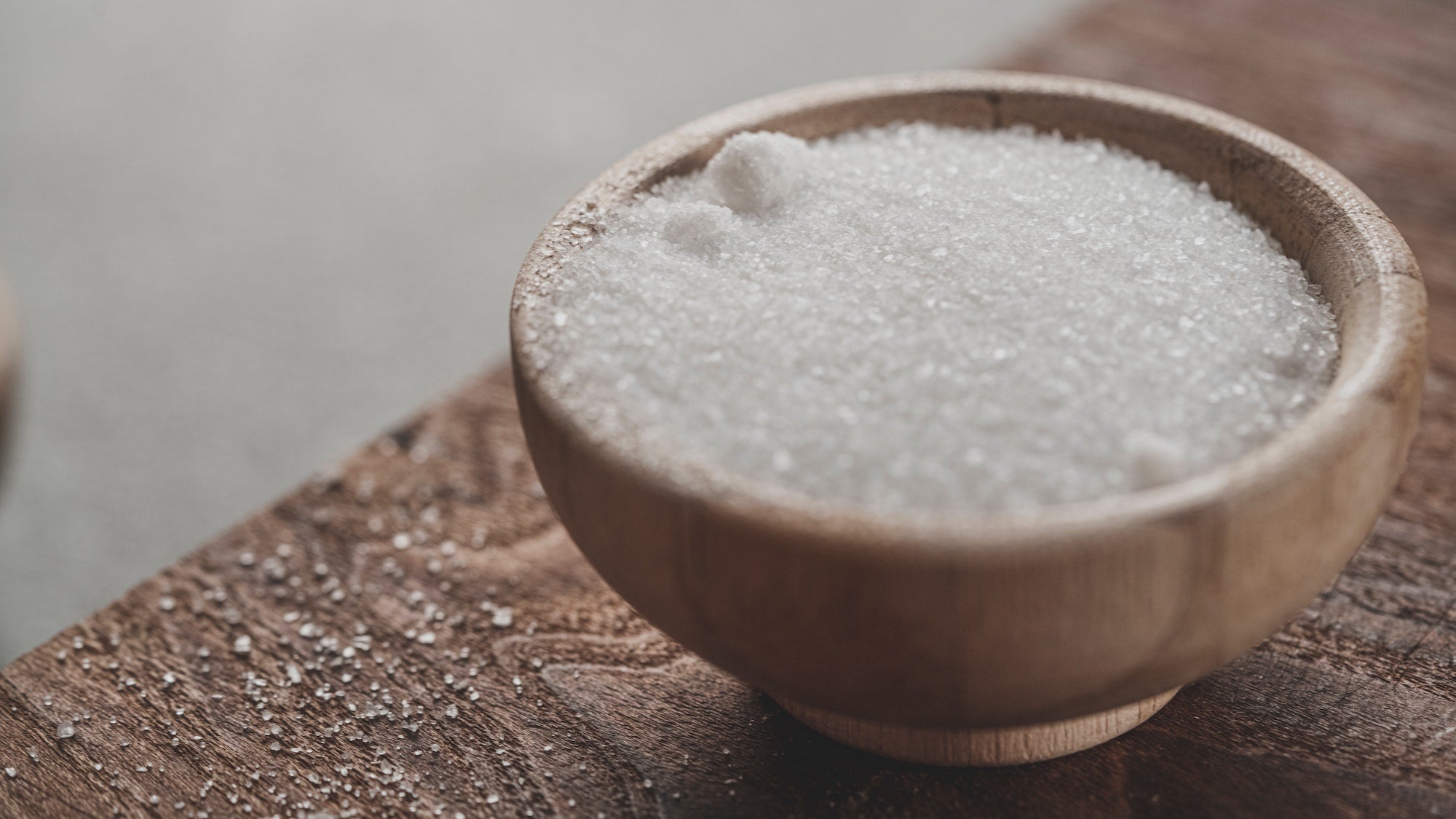Protein bars offer a convenient way to add protein and other nutrients to a busy and active lifestyle. However, not all protein bars are created equal.
While some may appear healthy due to clever marketing and packaging, many are simply candy bars in disguise. They’re loaded with added sugar (often in multiple forms) and contain low-quality protein sources.
Don’t know how to differentiate between a truly healthy protein bar and an imposter? We’ve got you covered! This article will explain what to look for on the nutrition label, but first, let’s explore the “whys” behind opting for bars that are low in sugar and rich in high-quality protein.
The Dangers of Sugar
When someone talks about the harmful effects of sugar, they’re usually talking about sucrose and high fructose corn syrup. These are referred to as “added sugar” or “refined sugar.”
Added sugar is commonplace in the modern diet and can be found in many packaged foods, such as cookies, crackers, cereals, sauces, soups, soda, sports drinks—and yes, even “healthy-looking” protein bars.
Refined sugar undeniably makes foods taste good, but it certainly doesn’t do your body any favors. Frequently consuming added sugar can cause your blood sugar level to stay chronically elevated. This puts a significant strain on the hormone insulin, which is responsible for regulating blood sugar levels.
Over time, insulin’s ability to mop up all the excess sugar in your blood declines, leading to a condition called insulin resistance—the driving factor of type 2 diabetes.[*][*]
Chronically high blood sugar (caused by high-sugar diets) also drives chronic inflammation, which is linked to most modern diseases.[*] In fact, high-sugar diets are consistently linked to conditions like obesity, heart disease, cognitive decline, kidney disease, and non-alcoholic fatty liver disease.[*][*][*][*][*] And we mustn’t forget cavities![*]
The Importance of Protein
Now that we’ve made our case against sugar, it’s time to make a case for protein.
Protein is one of three primary macronutrients—a nutrient the body needs and uses in large amounts. Proteins are comprised of amino acids that attach to one another to form long chains.
Our bodies can produce 11 of the 20 amino acids we require, but there are nine amino acids (called essential amino acids) that we cannot produce and must get through diet.
Proteins are needed for virtually every biochemical reaction in the body. Here are some other key roles of this macronutrient:
- Creation of key enzymes and hormones[*]
- Muscle growth and repair[*]
- Supports healthy bones and joints[*]
- Promotes healthy hair, skin, and nails[*][*][*]
- Maintains pH of blood and bodily fluids[*]
- Supports immune function[*]
- Supports satiety and fat loss[*][*]
The RDA for protein is 0.36 grams of protein per pound of body weight.[*] A 150-pound person, for example, would require 54 grams of protein per day.
It’s important to note that the RDA is the minimum amount of protein necessary to prevent muscle loss. A person may need more protein depending on factors like age, weight, physical activity levels, and dietary plans.
How to Find the Best Low-Sugar Protein Bars Available
So, how can you tell if a protein bar is actually healthy or simply a glorified candy bar? Here are our top tips for choosing a healthy option.
#1: Look for Minimally-Processed Protein Sources
The protein in the bar should come from minimally-processed sources, such as nuts, seeds, brown rice protein, pea protein, hemp protein, almond butter, peanut butter, and egg whites.
Steer clear of protein bars that contain protein isolates, as they may contain unnecessary (and downright unhealthy) additives.
The amount of protein matters too. Choose a bar that has at least 10 grams of protein.
#2: Nix Added Sugar
Avoid protein bars with added sugars, such as high-fructose corn syrup, cane sugar, fruit juice concentrates, molasses, and syrups.
Some natural sugar from fruit is okay, but keeping overall sugar low is important to avoid blood sugar swings, especially for those with diabetes. Those following low-carb diets like keto or paleo will also want to keep their sugar intake low.
Bars sweetened with natural sugar substitutes like stevia, monk fruit, and allulose are good options.
#3: Avoid Fillers
Watch out for ingredients like carrageenan, butylated hydroxytoluene (BHT), color additives, and artificial flavors. Instead, look for protein bars that use natural fillers like tapioca fiber, sunflower lecithin, and natural flavors.
#4: Don’t Forget the Fat and Fiber
In addition to protein, choose a bar with a good dose of fiber and healthy fats like nuts, seeds, cocoa butter, and coconut oil. The ideal bar will have at least five grams of fiber.
#5: Be Mindful of the Calorie Count
While we’re not advocates of calorie counting, protein bars are intended to be a supplement or snack, and shouldn’t provide as many calories as a complete meal. Stick to bars that have a calorie count between 150 and 300.
The Best Low-Sugar Protein Bar on the Market
While you can use the above tips to search through all the protein bars on the market, we can save you a lot of time by introducing you to IQBAR.
IQBAR is a vegan and keto protein bar that contains only 1-2 grams of sugar, 2-3 grams of net carbs, and 160-180 calories per bar. Additionally, about 25% of each bar is made of pure plant-based protein (12 grams).
They’re made using whole-food ingredients like pea protein, nuts, wild blueberries, coconut oil, and unsweetened chocolate. And you won’t find any added sugar in IQBAR—they’re sweetened with stevia and, for some flavors, a little bit of whole fruit.
To top it off, each bar contains five key brain nutrients shown to support sustained cognitive energy, performance, and health. These include MCTs, lion’s mane, flavonoids, vitamin E, and magnesium.
To find your favorite flavors, try our Chocolate Lovers Variety Pack, Fruit Lovers Variety Pack, or 7-Bar Sampler.
Enjoy an IQBAR before or after a workout or whenever you need a brain- and body-boosting pick-me-up!




